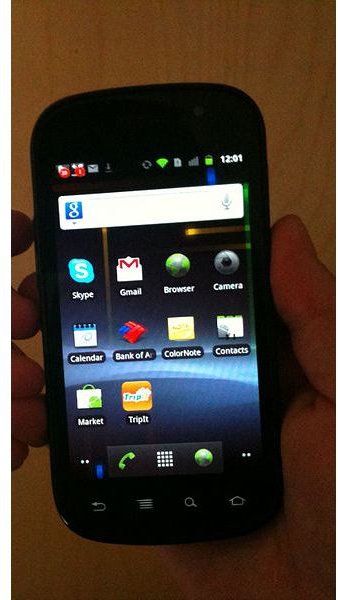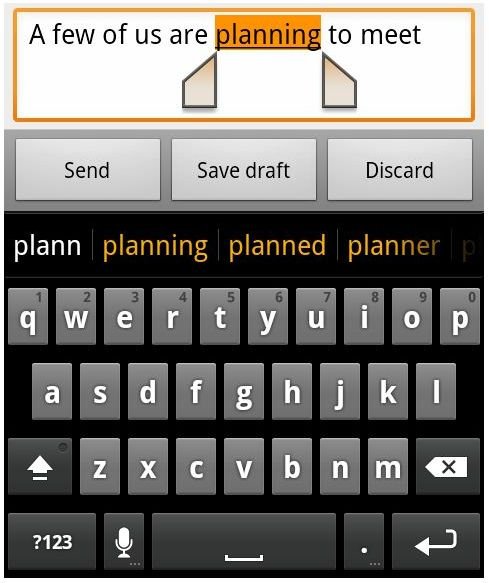Android Gingerbread Guide: How Do I Upgrade?
Grab a Slice of Gingerbread
In Google’s long-standing tradition of naming new versions of Android after sweets, the latest edition has been give the name Gingerbread. It is not a major update, as is revealed by its version number of 2.3.x (the previous version, known as Froyo, was numbered 2.2.x) but there are some extras that users should keep in mind.
Most users will first notice the interface changes. Gingerbread alters the touch keyboard slightly by re-positioning the virtual keys and changing the visual look of the keyboard to a high-contrast design, which is easier on the eyes and more visible outdoors. While this may not seem like a major update, I’ve used Froyo and Gingerbread keyboards side-by-side, and I found Gingerbread’s to be more accurate. The secret sauce has worked.
Another minor interface improvement is the addition of one-touch word selection and copy-paste. Users can select words by touching and holding. The previous behavior was similar, but resulted in a pop-up menu where users had to choose their action.
Under the hood, there are many minor changes, including a wide variety of API updates. Gingerbread can support more sensors, will allow games to run more quickly, and can squeeze the most out of your phone’s battery thanks to improved power management. These changes are ultimately rather minor, however, so don’t expect to see a dramatic difference compared to Froyo phones.
Am I Running Gingerbread?
The differences between Froyo and Gingerbread are so minor that a user who isn’t already quite familiar with Android probably would not notice the difference between them. You may therefore be wondering if your phone has the Gingerbread update, or if it’s running an older version.
Good news! Finding this out is simple. All you need to do is press your phone’s Menu button from a home screen, then select Settings. Now scroll down until you locate About Phone, and in that menu, select Software Information. At the top of the resulting screen will be your Android version.
Note that each version of Android has multiple small sub-versions that represent extremely minor updates. For example, Android 2.3.4 did little more than add Google Talk voice and video chat support. That’s all.
How Can I Obtain Gingerbread?

Chances are good that your current phone isn’t running Gingerbread. Although it has been available for many months now, there hasn’t been any great push towards it. One could argue that many phone manufacturers and carriers are being lazy about it, or that Google isn’t doing enough to make sure updates are pushed out quickly. Whatever the case, some Android phones are still sold without the latest version and many older phones are not yet updated.
If you can obtain an update, it will be done by pressing the Menu button, going to Settings, then scrolling down to Software Update. If an update is available, your phone can download it and install it automatically. Moving from one version of Android to another is a big leap, so don’t be surprised if the installation process takes a while. Make sure your phone is plugged in to a charger to ensure a dead battery does not interrupt the process.
What if your phone doesn’t yet have an update to 2.3.x? If that’s the case, your options are limited. In order to obtain the latest version you’re going to have to root your phone, then install a custom ROM that is based off Gingerbread. Usually this will result in a fully functional phone, but some older phones may have hardware limitations, so be sure to read up on the compatability of a specific custom ROM before trying to install it. This will save you a lot of time and potential heart-break, since installing an incompatible ROM will render your phone useless until you revert to something else.
Android Updates in the Future
It’s entirely possible that there is simply no way to install the newest version of Android on your phone. That’s a shame, and it’s one of the major problems facing Android right now. Some users are becoming frustrated when they are left behind. Users with 2.2 don’t feel too left out, but some older phones are still stuck with 2.1.
Hopefully, this process will become smoother in the future, but for now consumers don’t have much recourse. All you can do is pay attention to the version of Android that is pre-installed on a phone when you buy it and try to purchase from manufacturers that update their handsets frequently. HTC has a good reputation, and Motorola’s not bad. Samsung’s reputation for updates isn’t as hot, though it can depend on your specific phone, since Samsung seems to favor the flagship Galaxy over others.
References
- Android Developers: Android 2.3 Highlights
- Author’s own experience.
